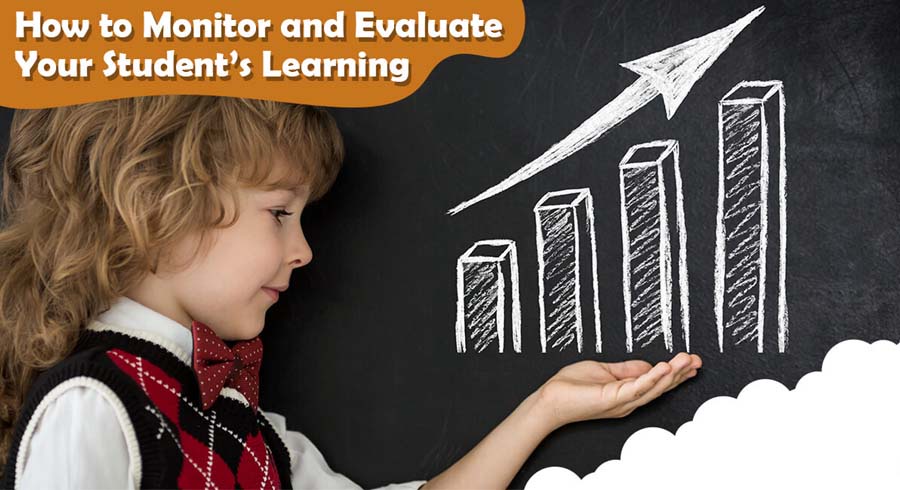As an educator, one of the most important responsibilities is to ensure that your student are making progress in their learning journey. Monitoring and evaluating your students' learning is not just about grading papers or administering tests; it involves a comprehensive approach that allows you to assess their overall academic development and identify areas for improvement. In this blog, we will explore effective strategies to monitor and evaluate your students' learning to foster a supportive and enriching educational environment. Clear Learning Objectives and Assessments: Establishing clear learning objectives is the foundation of effective monitoring and evaluation. These objectives define what students are expected to learn and help you design appropriate assessments. Ensure that your objectives are specific, measurable, achievable, relevant, and time-bound (SMART). Align your assessments with these objectives, as they serve as essential tools to gauge students' progress and understanding. Continuous Formative Assessment: Formative assessments play a crucial role in monitoring student learning on an ongoing basis. They are low-stakes assessments that provide valuable feedback to both teachers and students. These assessments can take various forms, such as quizzes, class discussions, short written assignments, or even informal Q&A sessions. Emphasize a growth mindset, encouraging students to learn from mistakes and improve continuously. Use Technology for Data Collection: Incorporating technology into the evaluation process can streamline data collection and analysis. Educational software and learning management systems (LMS) can help track student performance, identify learning patterns, and generate insightful reports. Leveraging these tools can save time and allow you to focus more on tailoring your teaching methods to suit individual student needs. Encourage Self-Assessment: Empower your students to take an active role in monitoring their own learning progress. Encouraging self-assessment helps students develop metacognitive skills, enabling them to reflect on their strengths, weaknesses, and areas for improvement. Provide self-assessment tools or questionnaires that prompt students to evaluate their understanding and effort, fostering a sense of ownership over their learning journey. Differentiated Instruction: Every student is unique, and their learning styles and paces may differ significantly. Employing differentiated instruction ensures that you address the diverse needs of your students. Tailor your teaching methods, materials, and assessments to accommodate individual learning preferences, aptitudes, and readiness levels. This personalized approach can significantly improve student engagement and achievement. Regular Feedback and Communication: Effective communication between educators, students, and parents is vital in the monitoring and evaluation process. Offer constructive feedback promptly to keep students informed about their progress. Regularly communicate with parents or guardians about their child's performance and areas that require attention. Constructive partnerships between educators and parents can greatly support students' academic growth. Track Progress Over Time: Evaluating student learning should not be limited to a single moment or test. Keep track of students' progress over time to observe trends and improvements. This longitudinal view allows you to identify any learning gaps that may have emerged and design interventions to address them effectively. Engage in Data Analysis: Collecting data is only the first step; analyzing it is equally crucial. Interpret the assessment results to gain insights into your students' strengths and weaknesses. Look for patterns, correlations, and areas that require intervention. Data analysis can reveal valuable information about your teaching methods and help you make data-driven instructional decisions. Peer Assessment and Collaboration: Encourage peer assessment and collaborative activities in the classroom. Peer evaluation allows students to learn from one another, gain diverse perspectives, and develop critical evaluation skills. Group projects and discussions foster teamwork and communication abilities, which are essential skills in the real world. Adjust Teaching Strategies Accordingly: Based on the insights gained from monitoring and evaluating your students' learning, be flexible in adapting your teaching strategies. If you notice certain concepts are challenging for many students, consider exploring alternative teaching methods or providing additional resources to reinforce learning. In conclusion, monitoring and evaluating your students' learning is an ongoing process that requires a combination of careful planning, effective assessment, and continuous improvement. By fostering a supportive and personalized learning environment, you can empower your students to reach their full potential. Remember, each student is a unique learner, and it is through these assessment techniques and adjustments that we can help them thrive academically and personally.
Empowering Educators: A Comprehensive Guide on Monitoring and Evaluating Your Student's Learning

Translation
5 min read
Source: How To Monitor and Evaluate Your Student’s Learning?
In case you have found a mistake in the text, please send a message to the author by selecting the mistake and pressing Ctrl-Enter.

No comments yet